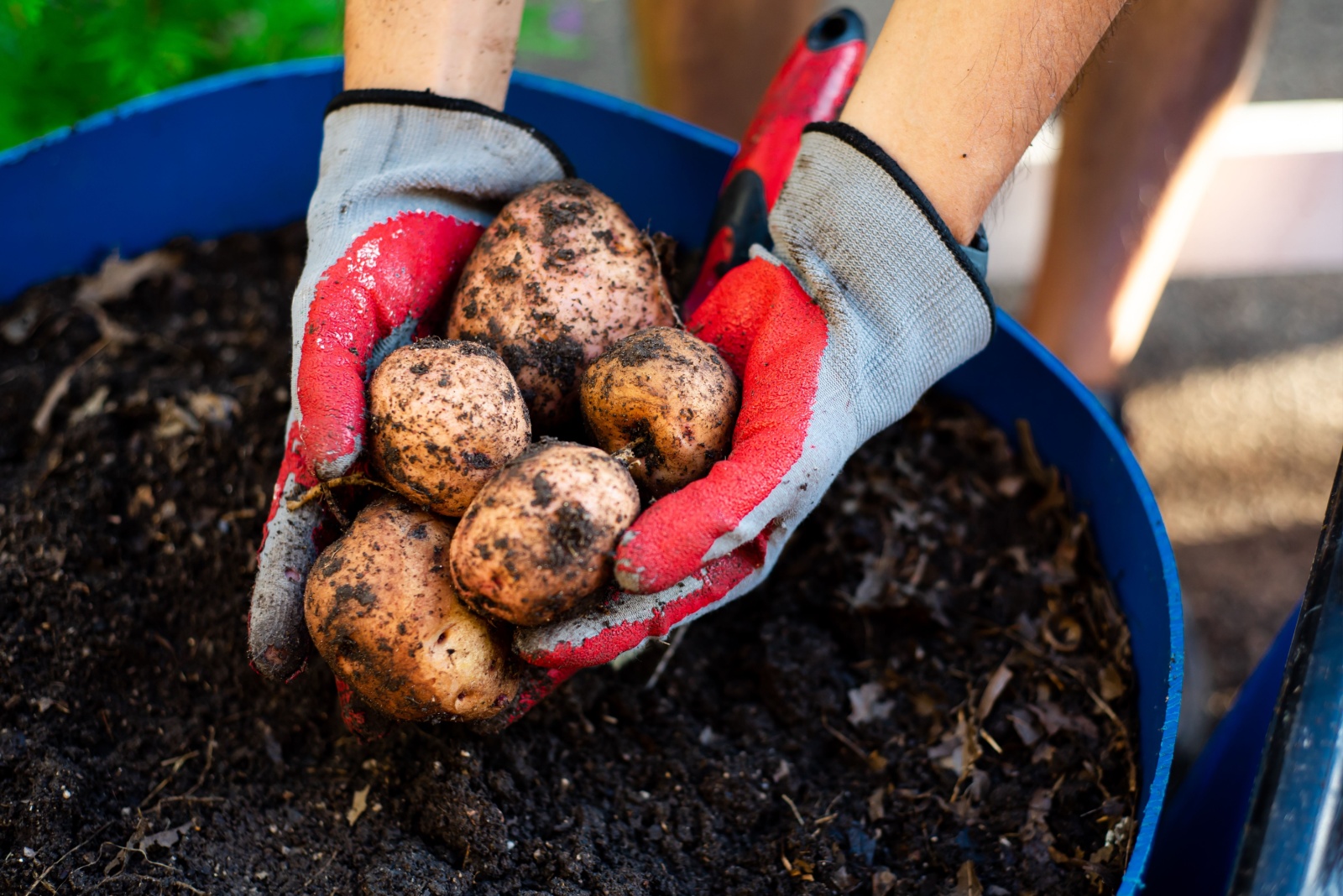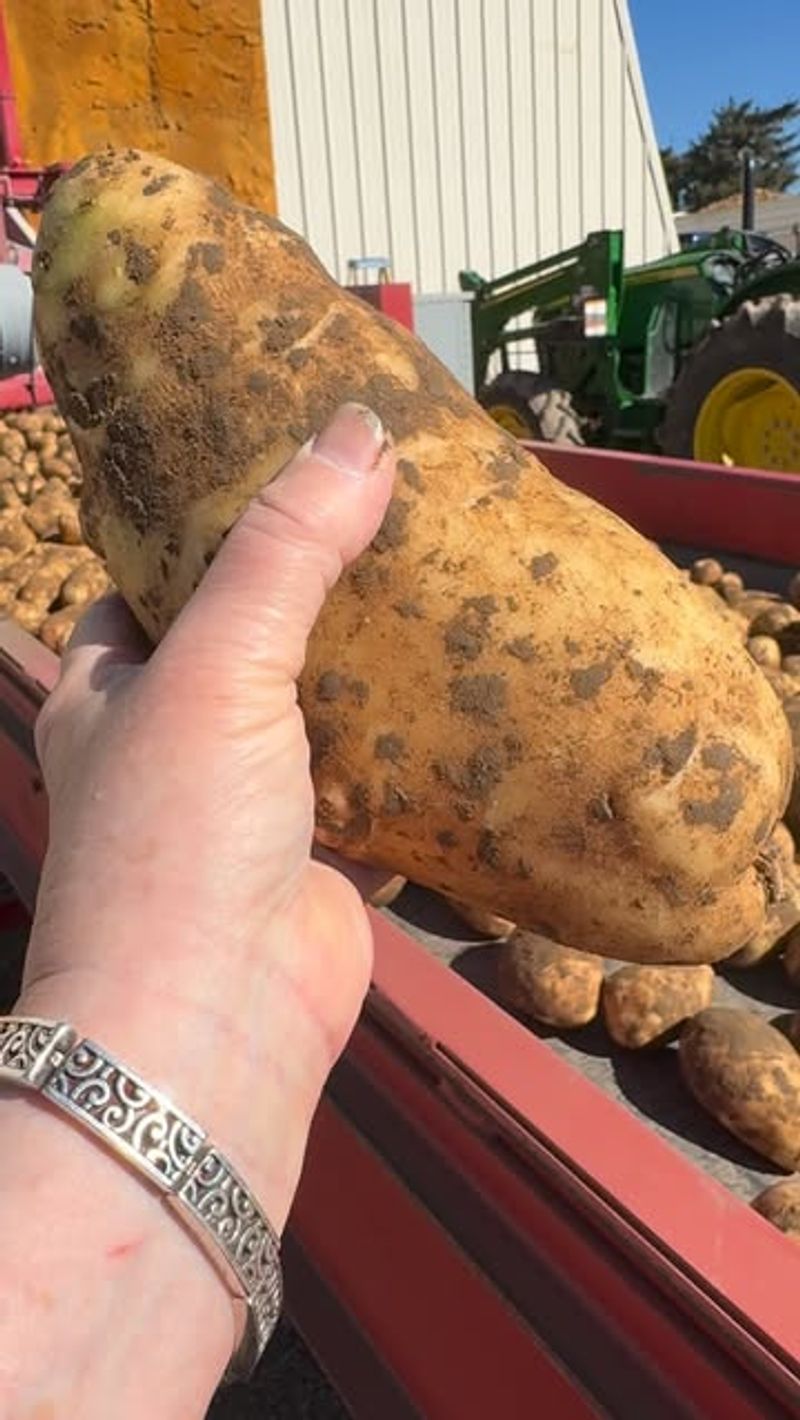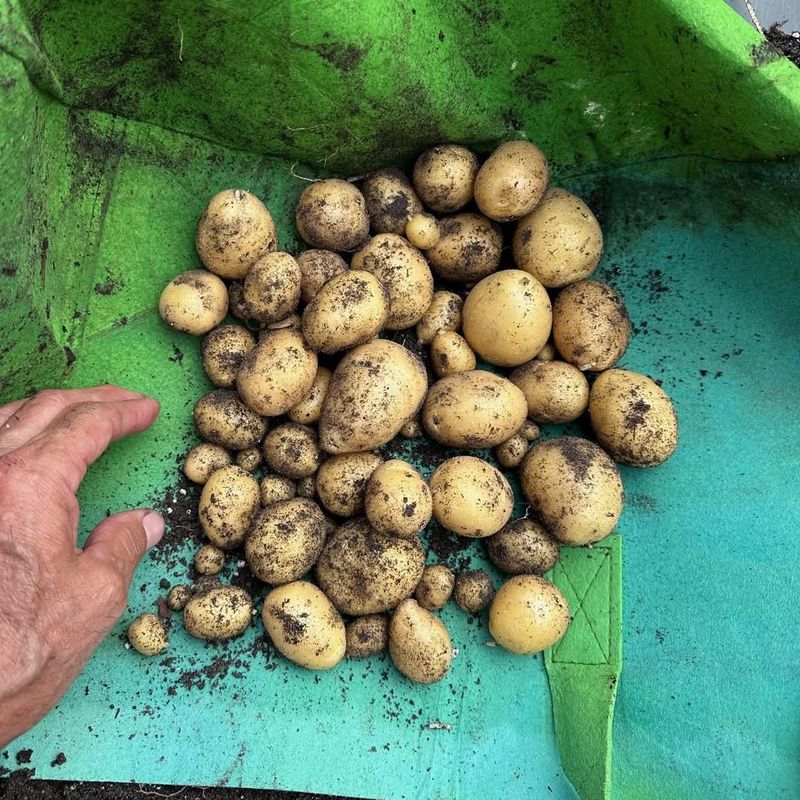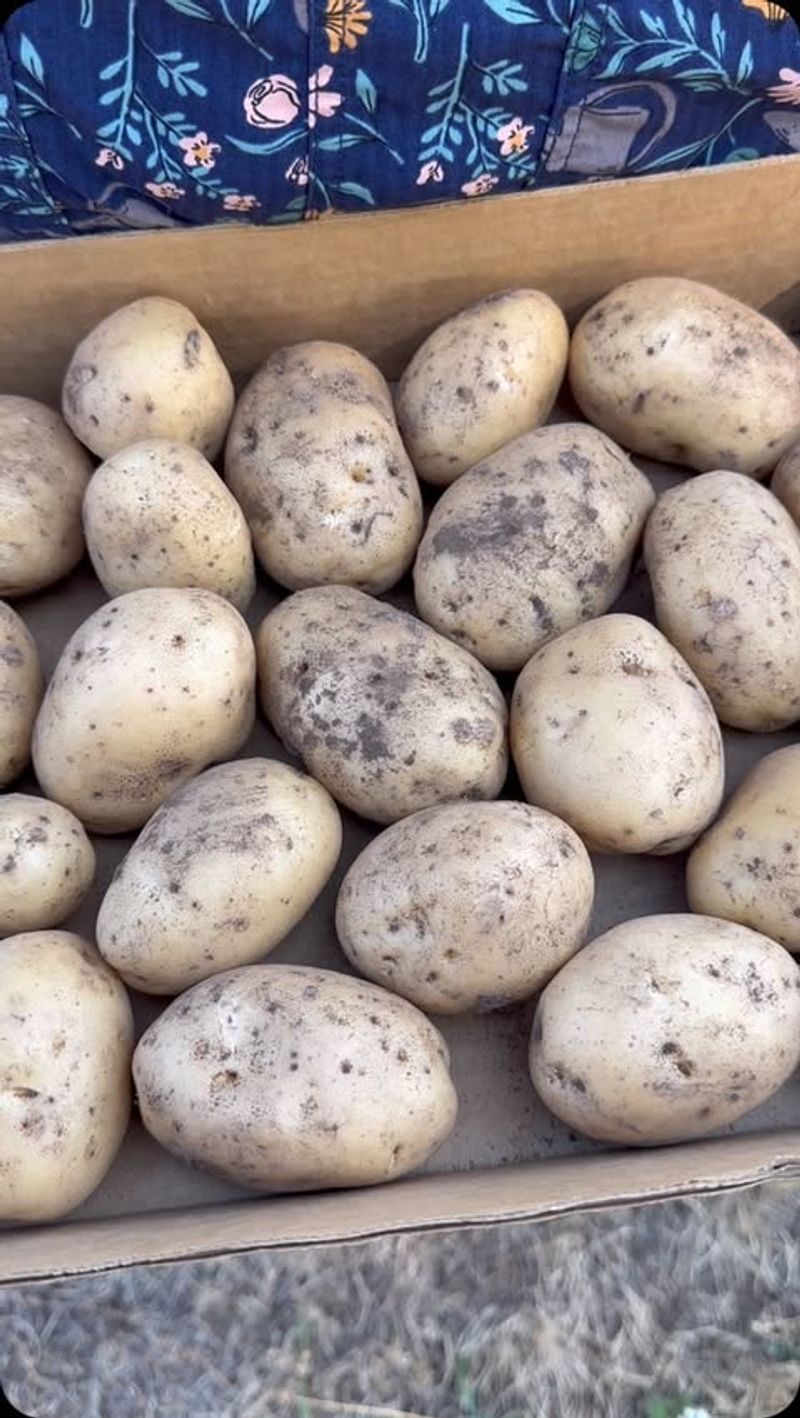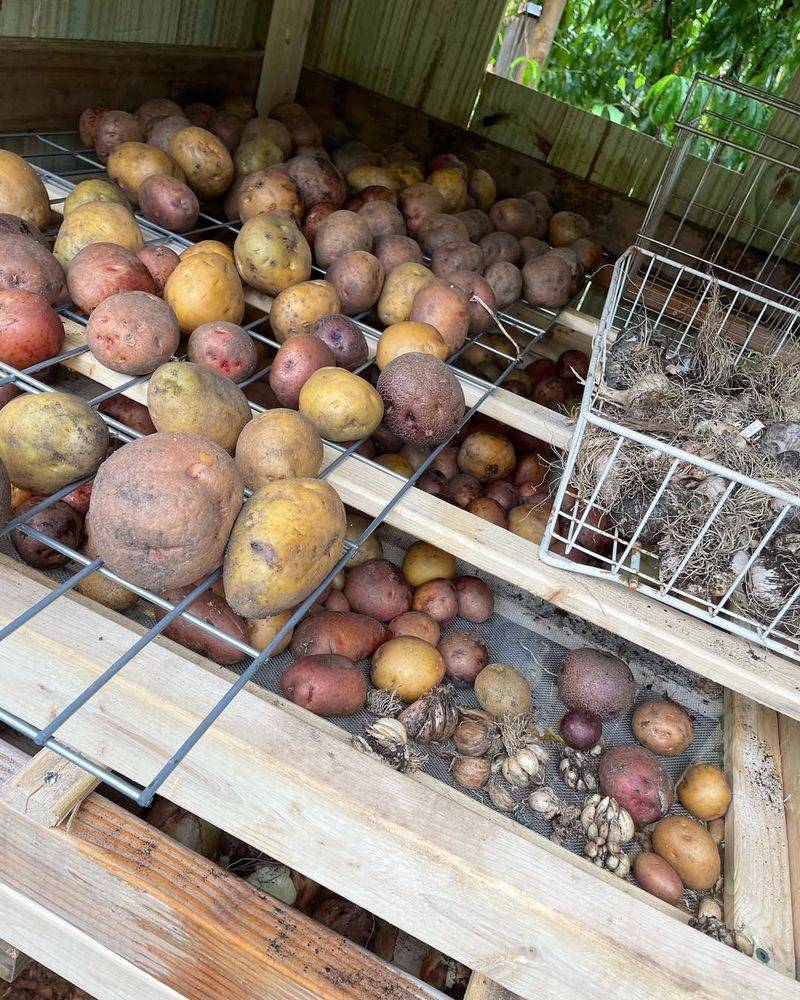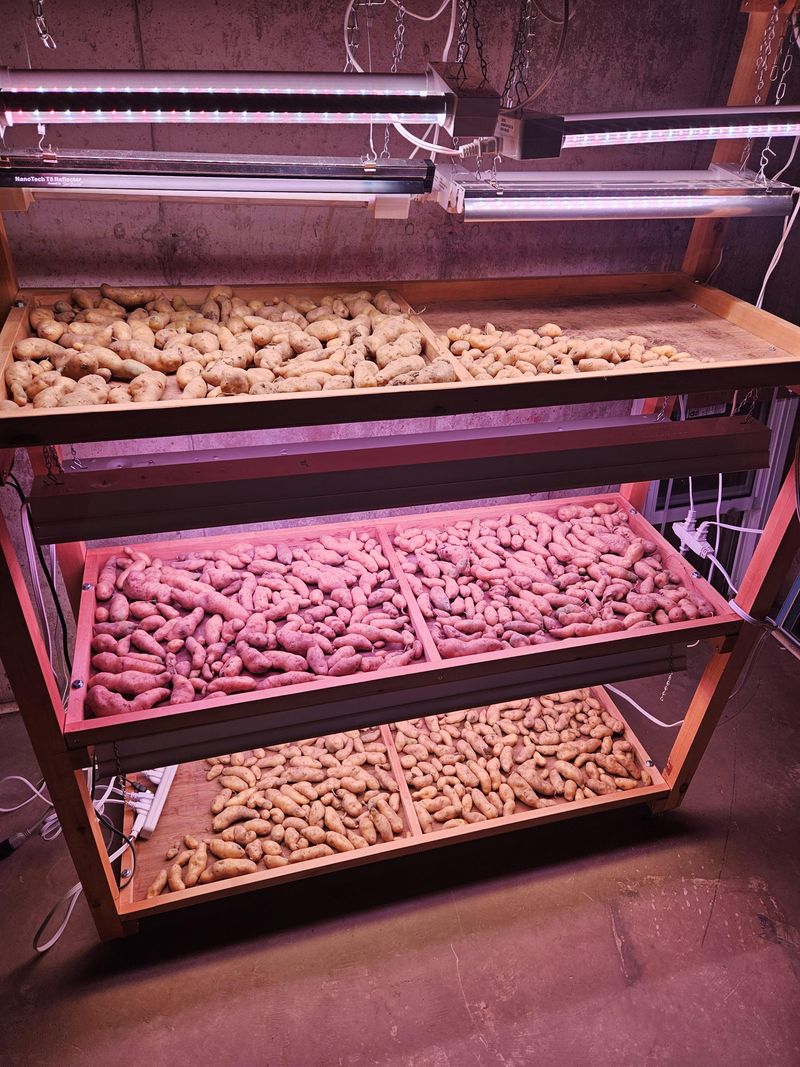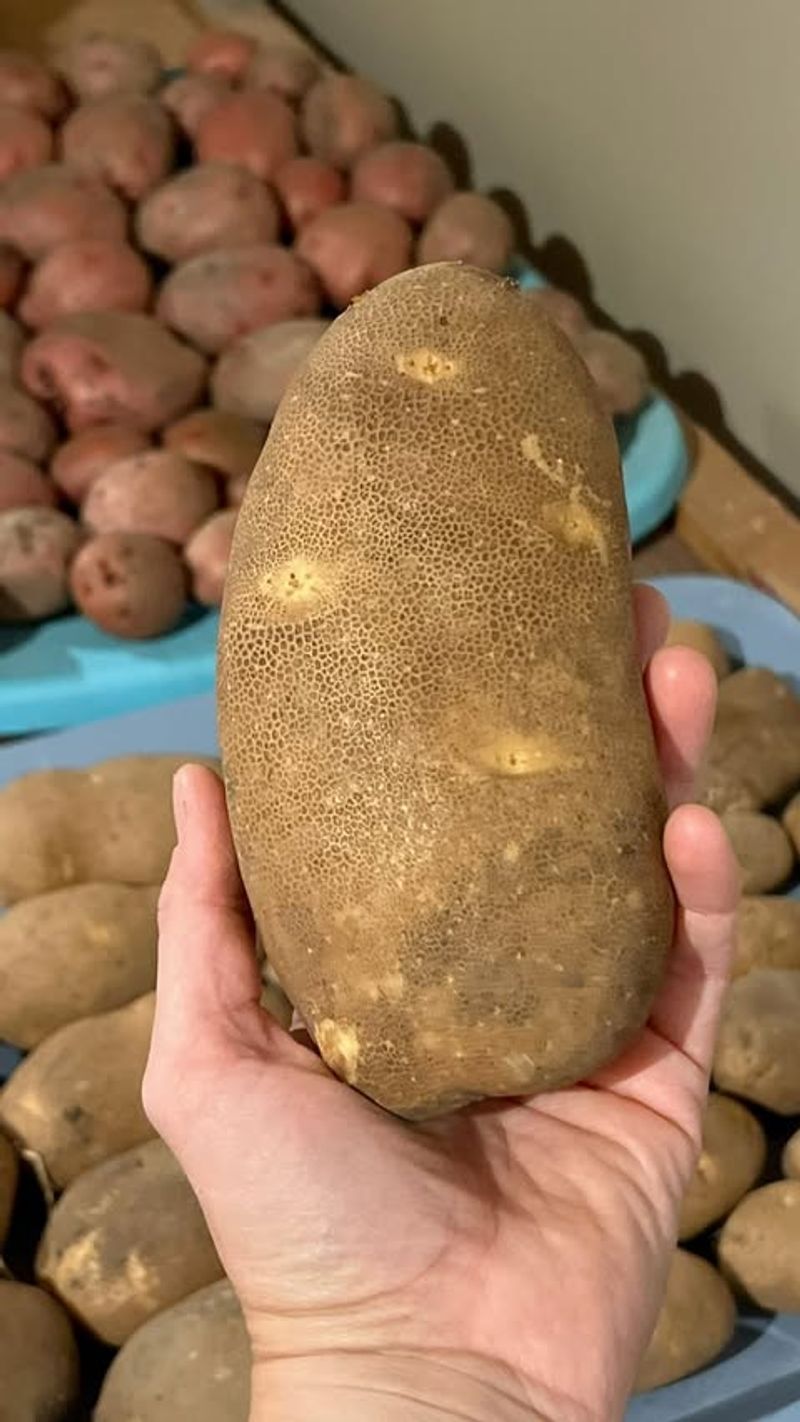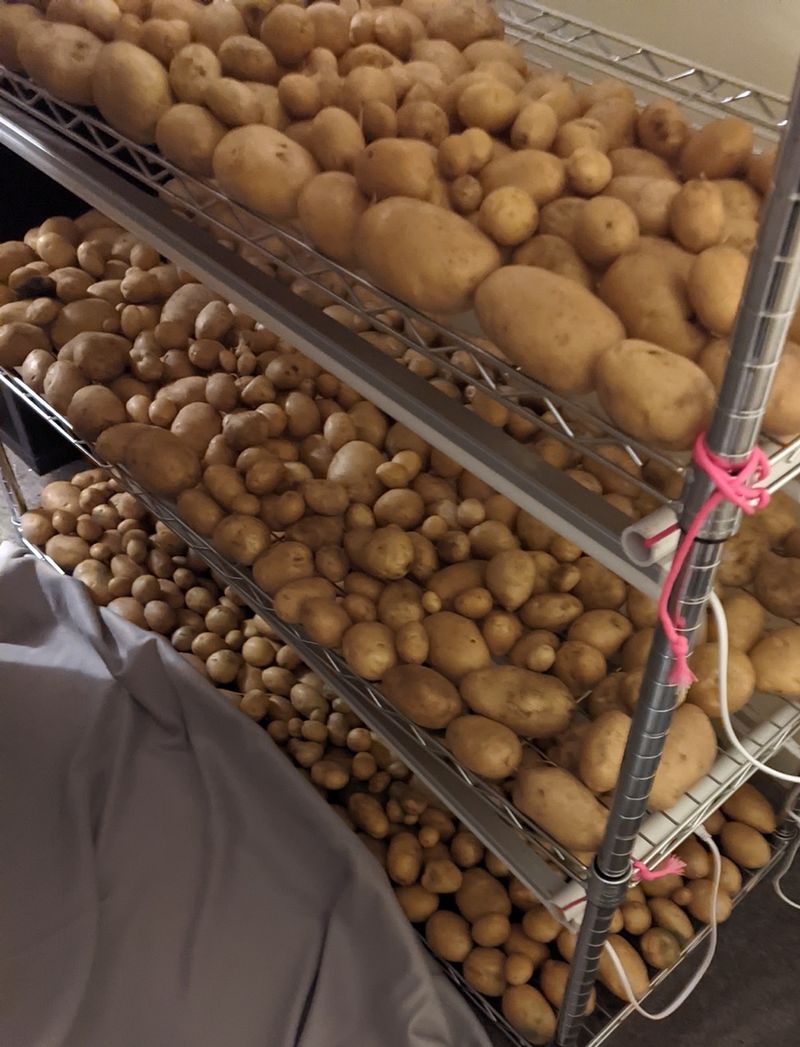Growing potatoes in your Idaho backyard is rewarding, but harvesting them is only half the battle. Curing your spuds properly makes all the difference between potatoes that last months and ones that rot within weeks.
This process toughens their skins, heals any cuts, and prepares them for long-term storage so you can enjoy your harvest well into winter.
1. Harvest At The Right Time
Timing your harvest correctly sets the stage for successful curing. Wait until the potato plants have died back naturally, usually two to three weeks after the foliage turns yellow and wilts.
Digging too early means thin skins that bruise easily and won’t store well. Check the weather forecast and aim for a dry day when the soil isn’t muddy.
Gently loosen soil around plants with a garden fork, being careful not to pierce the tubers. Let them sit briefly before moving to the next step.
2. Brush Off Excess Dirt Gently
Once your potatoes are out of the ground, resist the urge to wash them immediately. Water introduces moisture that encourages rot and shortens storage life significantly.
Instead, use your hands or a soft brush to remove loose, dry soil from the surface. Work carefully to avoid damaging the delicate skins, which are still vulnerable at this stage.
Leave a thin layer of dirt if it’s stuck on firmly. It will protect the potato during curing and can be brushed off later before cooking.
3. Sort And Inspect Your Harvest
Before curing begins, examine each potato carefully for damage. Look for cuts, bruises, soft spots, or signs of disease that could spread to healthy tubers during storage.
Set aside any damaged potatoes to use first in your kitchen within the next week or two. Even small nicks can invite bacteria and mold that ruin entire batches.
Keep only firm, healthy potatoes for the curing process. This simple sorting step prevents one bad spud from spoiling your whole harvest later on.
4. Choose A Dark Curing Location
Finding the perfect curing spot is crucial for success. Your potatoes need complete darkness to prevent them from turning green and developing solanine, a toxic compound that makes them bitter.
A basement, garage, or shed works wonderfully as long as light doesn’t sneak in. Even brief exposure to sunlight during curing can cause problems you’ll notice weeks later.
Make sure the space is well-ventilated but draft-free. Good air circulation prevents moisture buildup while maintaining the stable environment your potatoes need.
5. Maintain Proper Temperature And Humidity
Temperature control makes or breaks the curing process. Keep your storage area between 50 and 60 degrees Fahrenheit for optimal results during the two-week curing period.
Idaho’s fall weather usually cooperates, but monitor conditions with a simple thermometer. Too warm speeds up sprouting, while too cold can damage the tubers and cause sugar accumulation.
Humidity should stay around 85-95 percent to prevent shriveling. A small humidifier or damp towels nearby can help if your space feels too dry.
6. Spread Potatoes In Single Layers
How you arrange your potatoes during curing matters tremendously. Spread them out in single layers on newspaper, cardboard, or wooden slats so air can circulate around each one.
Avoid stacking or piling them during this critical period. Potatoes touching each other can trap moisture and create pockets where mold thrives, ruining your careful harvest work.
Give each tuber a bit of breathing room. This spacing allows their skins to toughen evenly and any minor cuts to heal properly over the next two weeks.
7. Wait Two Weeks Before Final Storage
Patience pays off when curing potatoes. Allow a full two weeks in your curing area before transferring them to final long-term storage locations or containers.
During this time, the skins thicken and toughen, minor wounds seal up, and the potatoes become significantly more resistant to rot and disease. You’ll notice they feel firmer and drier.
After curing completes, move them to a cooler spot around 40 degrees for storage. Properly cured Idaho potatoes can last six months or longer when stored correctly.

